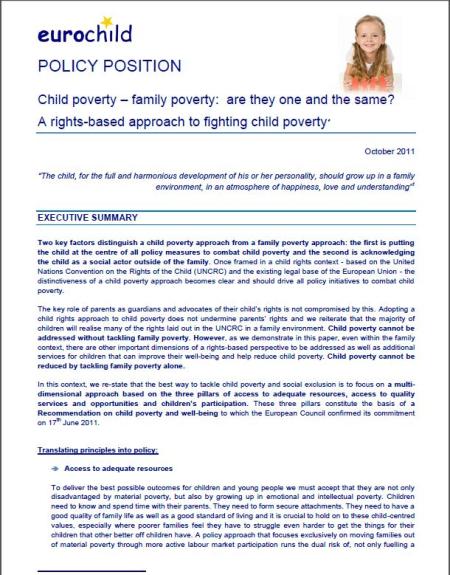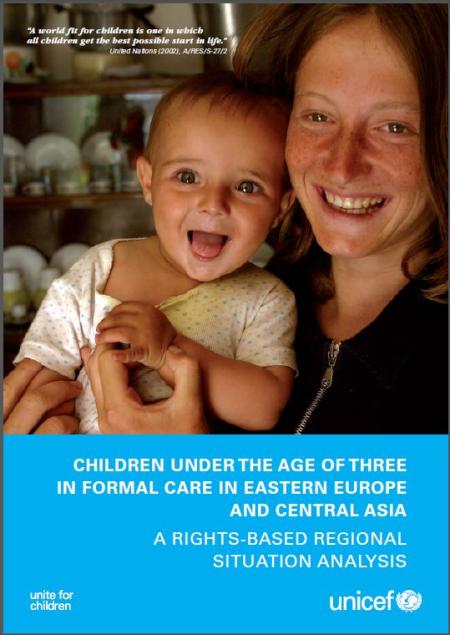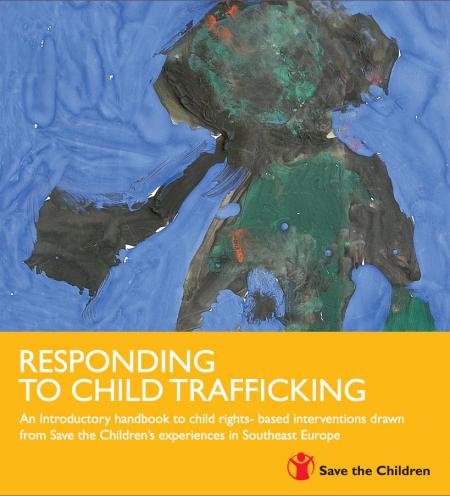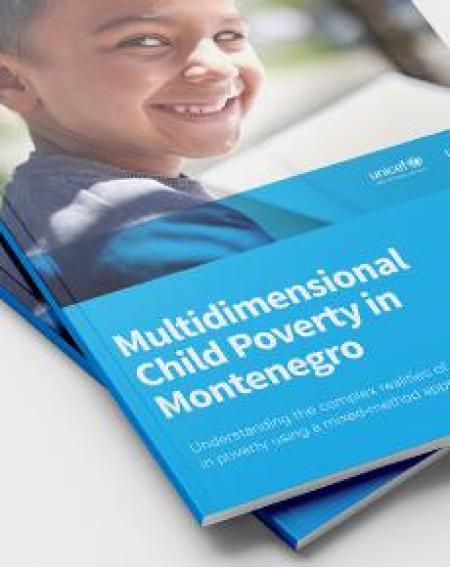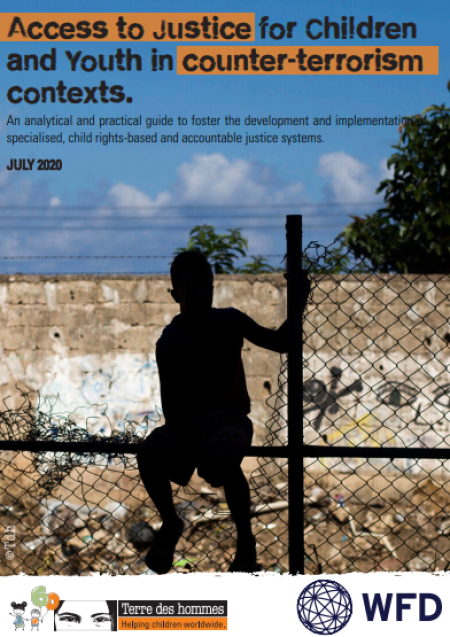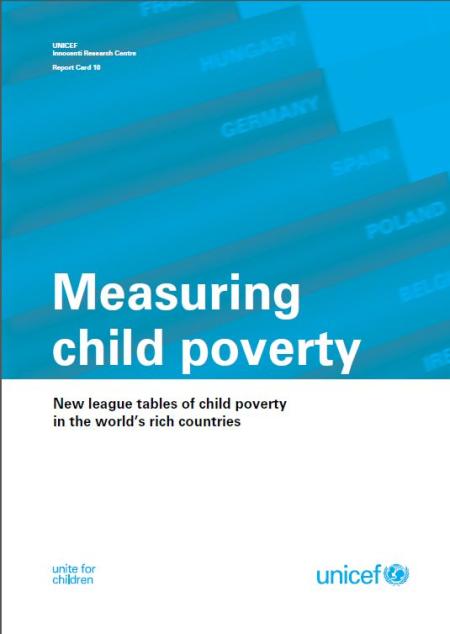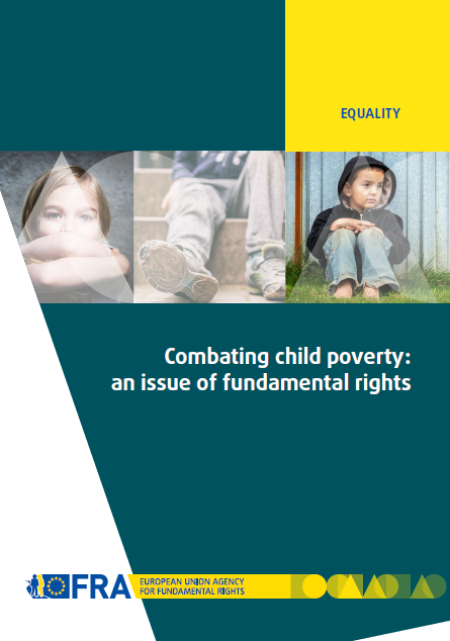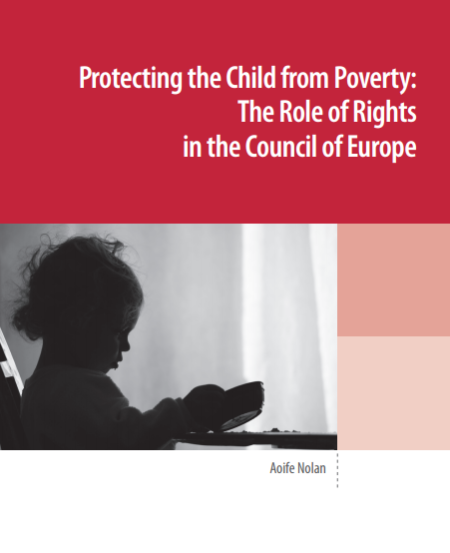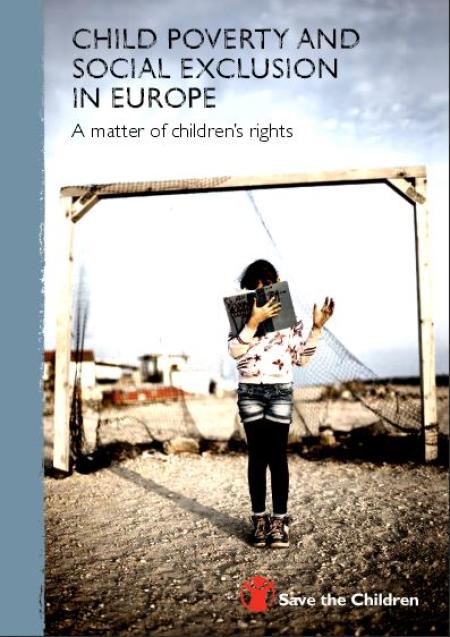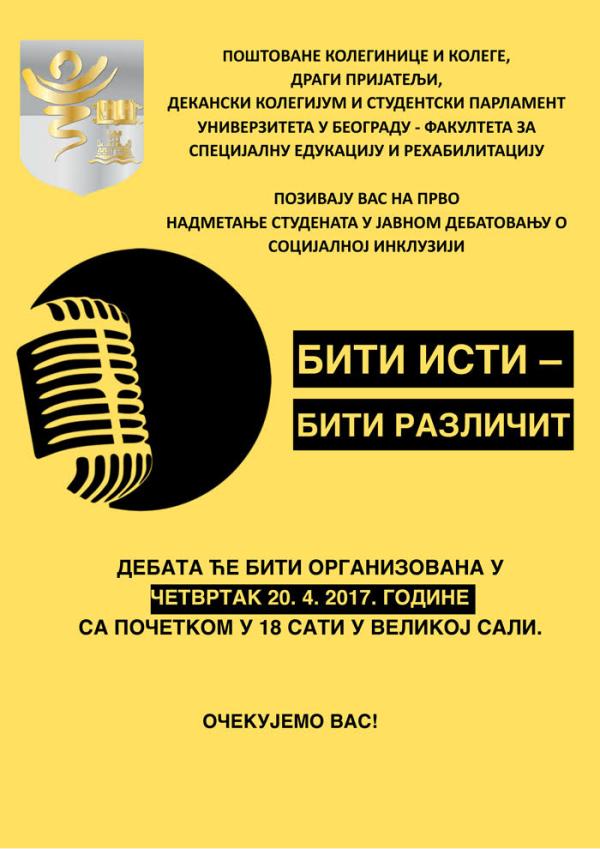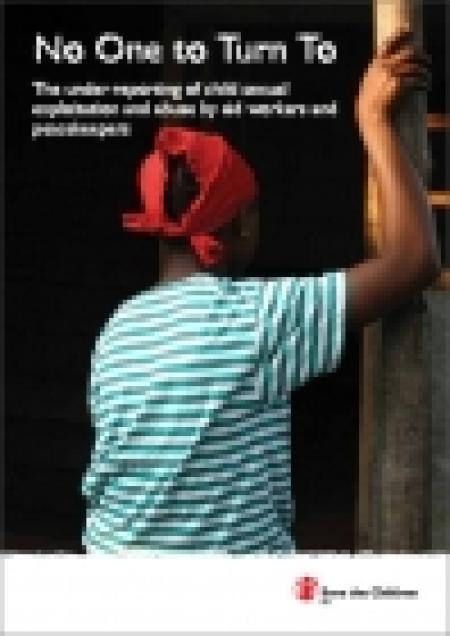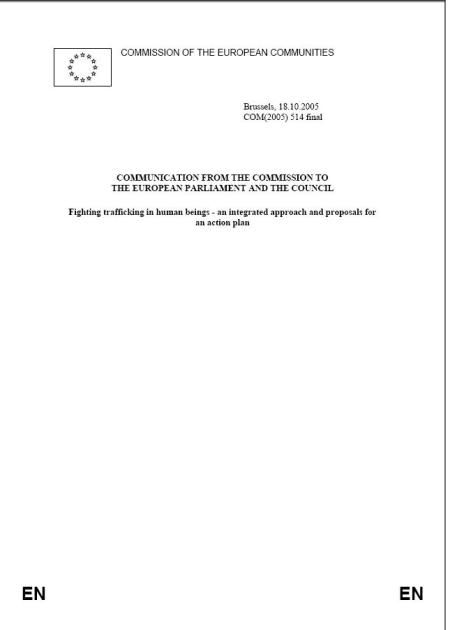
The latest position paper of Eurochild tackles child poverty in Europe from a rights-based perspective. Children and young people are the most likely group of people to be threatened by poverty. As new chapters of the financial crisis unravel in Europe, the number of children at risk is still on the rise. Many children will suffer as families worst hit by the on-going recession struggle to make ends meet. There are more than 20 million children and young people living at risk of poverty, and even before the crisis, 20% of children living at risk of poverty was unacceptably high compared to 16% of the population as a whole. Two key factors distinguish a child poverty approach from a family poverty approach: the first is putting the child at the centre of all policy measures to combat child poverty and the second is acknowledging the child as a social actor outside of the family. Child poverty cannot be addressed without tackling family poverty. At the same time, we cannot reduce child poverty by tackling family poverty alone. Poverty is a multi-dimensional phenomenon and therefore policies and practices must address all aspects of poverty. Families play a key role in promoting children’s participation but so do all the organisations that are essential to children’s development such as schools, youth organisations, sports groups and cultural organisations. Thus children’s participation has to be recognised in both family settings, in schools, public authorities, communities, and amongst other professionals working with children. Resources and services must be able to cover cultural, social, recreational and sport activities/hobbies, to support children’s development and participation in society.


